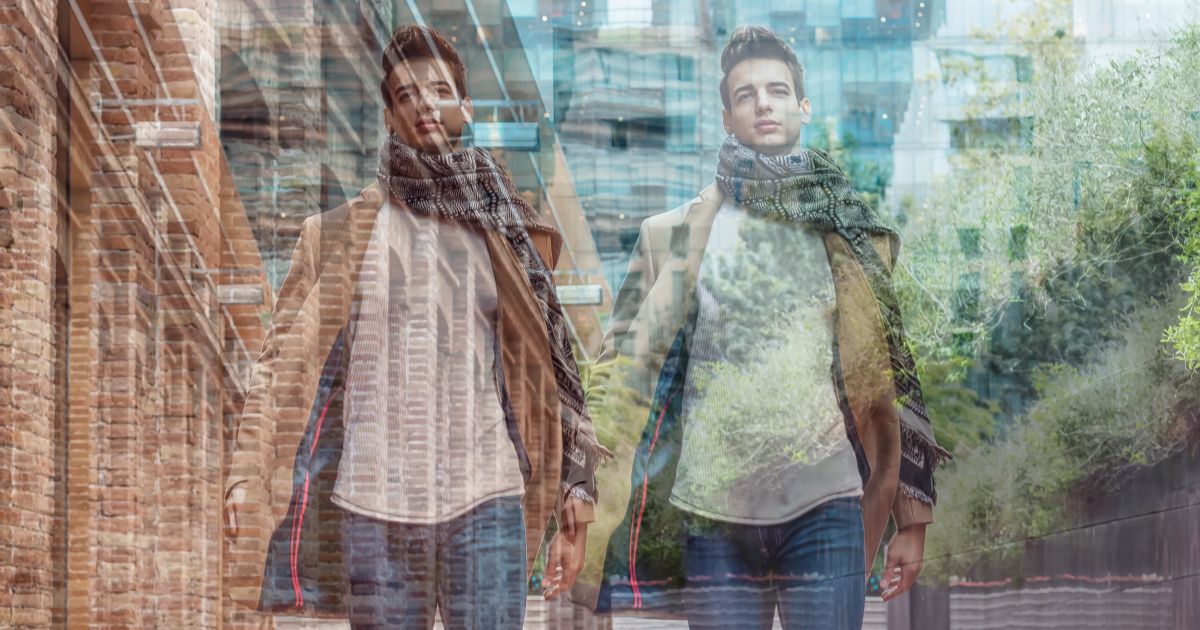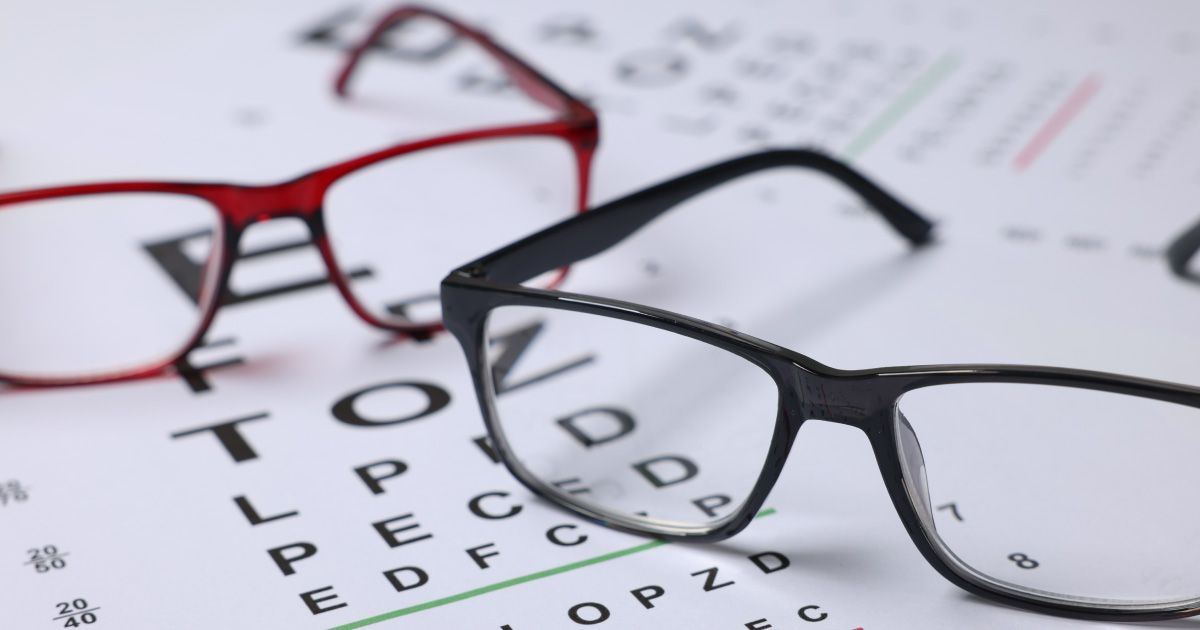Managing Double Vision: Tips For Living With This Visual Condition

Read time: 6 minutes
Double vision, medically known as diplopia, occurs when a person sees two images of a single object. This condition can be transient or persistent, affecting either one eye (monocular diplopia) or both eyes (binocular diplopia). The underlying causes of double vision are varied, ranging from benign issues such as refractive errors to more serious conditions like nerve damage, muscle disorders, or systemic diseases such as diabetes and multiple sclerosis.
Types of Double Vision
- Binocular Diplopia results from misalignment of the eyes, causing each to send a different image to the brain. Normally, these two images are fused into one by the brain's visual processing centers. However, when alignment is disrupted—due to strabismus (crossed eyes), cranial nerve palsies, or other ocular motility disorders—the brain struggles to combine these images correctly.
- Monocular Diplopia often relates to structural problems within the affected eye itself. Issues like cataracts, corneal irregularities, and lens dislocation can distort light entering the eye and produce double images.
Understanding whether your double vision is monocular or binocular is crucial for diagnosis and treatment. Consulting with an optometrist or ophthalmologist can help pinpoint the exact cause and guide appropriate management strategies tailored to improve your quality of life.
Symptoms and Impact on Daily Living
The primary symptom of double vision is seeing two images of a single object, which can be vertically, horizontally, or diagonally displaced. Additional symptoms may include headaches, eye strain, nausea, and difficulty focusing.
These symptoms can significantly impact daily life. Reading becomes strenuous as words appear doubled and distorted. Driving poses serious risks due to impaired distance judgment. Even simple tasks like walking up stairs can become hazardous due to compromised depth perception. Professional life may be affected, as precision tasks such as computer work or operating machinery become more challenging and potentially dangerous.
Social interactions may also suffer as individuals struggle with eye contact and facial recognition. This condition can strain emotional well-being by reducing confidence and increasing anxiety in social situations.
Seeking Medical Evaluation and Treatment Options
Seeking medical evaluation is crucial for anyone experiencing double vision. The first step involves scheduling an appointment with an eye care professional. During the consultation, a comprehensive eye examination will be conducted to assess overall eye health and determine the cause of the double vision.
Additional tests such as blood work or imaging studies like MRI or CT scans may be necessary to rule out neurological issues or other systemic conditions. It's essential to provide your doctor with a detailed medical history and describe any accompanying symptoms.
Treatment options vary depending on the underlying cause. For refractive errors, corrective lenses may resolve the issue. In cases of muscle imbalance, vision therapy exercises might be recommended. For more severe causes such as cranial nerve palsy or brain lesions, specialized medical interventions including surgery or medication may be required.
Read more about refractive errors from the National Eye Institute.
Communicating Effectively With Healthcare Providers
Effective communication with healthcare providers is essential for managing double vision. Be prepared for appointments by keeping a detailed record of symptoms, including when they occur, their frequency, and any potential triggers. This information will help your healthcare provider understand the nuances of your condition and tailor their approach accordingly.
During consultations, don't hesitate to ask questions about potential diagnostic tests, treatment options, and possible side effects. Discuss any concerns about how treatments might interact with other medications you're taking.
Consider bringing a family member or friend to appointments for support and to help remember details discussed. Follow up with recommended specialists or therapies and maintain open communication if new symptoms arise or if prescribed treatments don't seem effective.
Using Corrective Lenses and Eye Exercises
Managing double vision often involves a combination of corrective lenses and eye exercises. Specialized eyeglasses or contact lenses with prisms can help realign visual input, effectively reducing or eliminating double vision by compensating for misalignment.
Eye exercises play a crucial role in strengthening ocular muscles and improving coordination between the eyes. Techniques such as convergence exercises encourage both eyes to work together more effectively. Another beneficial exercise involves alternating focus between near and far objects, which helps train the eyes to adjust quickly and accurately.
While corrective lenses offer immediate relief, consistent practice of eye exercises can potentially address underlying causes of double vision, contributing to long-term visual health and improved quality of life.
Implementing Lifestyle Changes
Several lifestyle changes can help reduce the symptoms of double vision:
- Diet: Ensure optimal eye health through a balanced diet rich in vitamins A, C, and E. Incorporate leafy greens, carrots, and citrus fruits into your meals.
- Exercise: Regular physical activity improves overall well-being and can indirectly benefit eye health by improving circulation.
- Environment: Create a comfortable living space with proper lighting to reduce eye strain. Use adjustable lamps and avoid harsh fluorescent lights.
- Ergonomics: Make ergonomic adjustments to workspaces, such as positioning computer screens at eye level and taking regular breaks to rest your eyes.
- Stress Management: Practice techniques like yoga, meditation, or deep-breathing exercises to reduce overall tension that might exacerbate double vision.
- Sleep: Prioritize adequate sleep to ensure your eyes are rested and less prone to strain during waking hours.
- Eyewear: Consistently wear prescribed eyeglasses or contact lenses as advised by your eye care professional.
Coping Strategies for Daily Activities
Adapting to life with double vision requires developing effective coping strategies:
- Environmental modifications: Ensure adequate lighting in your home and workspace to reduce visual strain. Minimize glare from screens and reflective surfaces to prevent discomfort.
- Visual aids: Utilize prescribed devices such as prisms or specialized glasses to help realign images, making tasks like reading or driving easier.
- Activity pacing: Incorporate regular breaks into activities that require intense focus to allow your eyes time to rest.
- Eye exercises: Engage in prescribed exercises to strengthen eye muscles and improve control over eye movements. Get more tips from WebMD here.
- Organization: Keep frequently used items in consistent locations to compensate for any momentary disorientation caused by double vision.
- Adaptive techniques: Learn and practice techniques specific to challenging activities, such as using a finger to guide reading or relying more on peripheral vision when necessary.
- Support systems: Engage with support groups or counseling services to address the emotional and psychological aspects of living with double vision.
The Takeaway
Living with double vision presents unique challenges, but with proper management and coping strategies, individuals can maintain a good quality of life. By working closely with healthcare providers, implementing lifestyle changes, and utilizing appropriate treatments, many people successfully navigate daily activities despite this condition.
It's important to remember that managing double vision is often an ongoing process. As your condition or life circumstances change, you may need to adjust your strategies. Stay proactive in your care by maintaining regular check-ups with your eye care professional and being open to trying new management techniques as they become available.
With patience, persistence, and the right support system, it's possible to adapt to the challenges of double vision and continue pursuing personal and professional goals. While the journey may be challenging at times, many individuals find that they develop increased resilience and problem-solving skills as they learn to thrive with this visual condition.
Share this blog post on social or with a friend:
The information provided in this article is intended for general knowledge and educational purposes only and should not be construed as medical advice. It is strongly recommended to consult with an eye care professional for personalized recommendations and guidance regarding your individual needs and eye health concerns.
All of Urban Optiks Optometry's blog posts and articles contain information carefully curated from openly sourced materials available in the public domain. We strive to ensure the accuracy and relevance of the information provided. For a comprehensive understanding of our practices and to read our full disclosure statement, please click here.


















